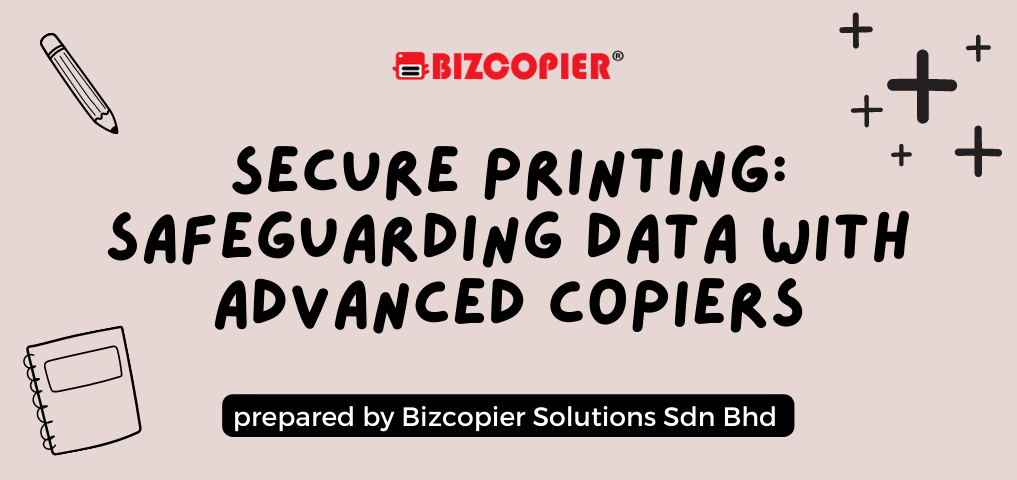
In today’s digitized world, information security is paramount, and organizations must prioritize protecting sensitive data from unauthorized access. While most businesses focus on securing their networks and digital assets, physical documents often go overlooked. However, modern copiers and printers can pose significant risks if not appropriately managed. To ensure data confidentiality, integrity, and availability, organizations need to adopt advanced security measures to safeguard their printing environment. In this article, we will explore the importance of secure printing and discuss various strategies for protecting sensitive data with advanced copiers.
Understanding the Risks: Copiers and printers have evolved into sophisticated multifunctional devices that can store, process, and transmit data. Unfortunately, this progress also opens doors for potential security breaches. Unattended printouts containing sensitive information can fall into the wrong hands, leading to data leaks, identity theft, or corporate espionage. Additionally, hackers can exploit vulnerabilities in network-connected printers to gain unauthorized access to internal systems or intercept print jobs containing confidential data.
Implementing Secure Printing Practices: To mitigate the risks associated with copiers and printers, organizations can implement a range of secure printing practices. Let’s explore some essential strategies:
- Authentication and Access Control: Implementing user authentication mechanisms, such as PIN codes, proximity cards, or biometric identifiers, ensures that only authorized personnel can access printing features. This prevents unauthorized individuals from intercepting confidential documents or tampering with print settings.
- Encrypted Communication: Enabling encrypted communication protocols, such as Secure Socket Layer (SSL) or Transport Layer Security (TLS), between printers and connected devices helps protect the confidentiality and integrity of print jobs. This ensures that data remains encrypted during transmission, preventing interception or tampering.
- Secure Print Release: Implementing secure print release mechanisms allows users to authenticate themselves at the printer before their document is printed. This feature prevents sensitive documents from being left unattended on the printer tray and ensures that only the intended recipient retrieves the printouts.
- Data Overwrite and Encryption: Modern copiers often include features for overwriting or encrypting data stored on their internal hard drives. This ensures that sensitive information is irretrievable after a print job is completed, reducing the risk of data breaches if the device is compromised or reaches its end-of-life.
- Audit Trails and Reporting: Enabling comprehensive audit trails and reporting functionalities helps organizations monitor printer activity, track document flow, and identify potential security incidents. This allows for timely response and remediation in the event of any unauthorized access attempts or suspicious printing behavior.
- Firmware and Software Updates: Regularly updating the firmware and software of copiers and printers is essential to address any known vulnerabilities and apply security patches. Manufacturers often release updates that address potential security risks, ensuring that the devices remain protected against emerging threats.
- Employee Awareness and Training: Promoting employee awareness about secure printing practices is crucial for maintaining a secure printing environment. Regular training sessions can educate employees about the risks associated with unsecured printing and encourage them to adopt best practices, such as secure print release and proper handling of sensitive documents.
As organizations focus on securing their digital assets, it is equally important to address the potential security risks posed by copiers and printers. By implementing advanced security measures, such as authentication, encrypted communication, secure print release, data overwrite, and regular updates, organizations can significantly reduce the risk of data breaches and maintain data confidentiality. Additionally, fostering employee awareness and training helps create a security-conscious culture within the organization. By prioritizing secure printing practices, businesses can safeguard their sensitive data and maintain the trust of their customers and partners in an increasingly interconnected world.

